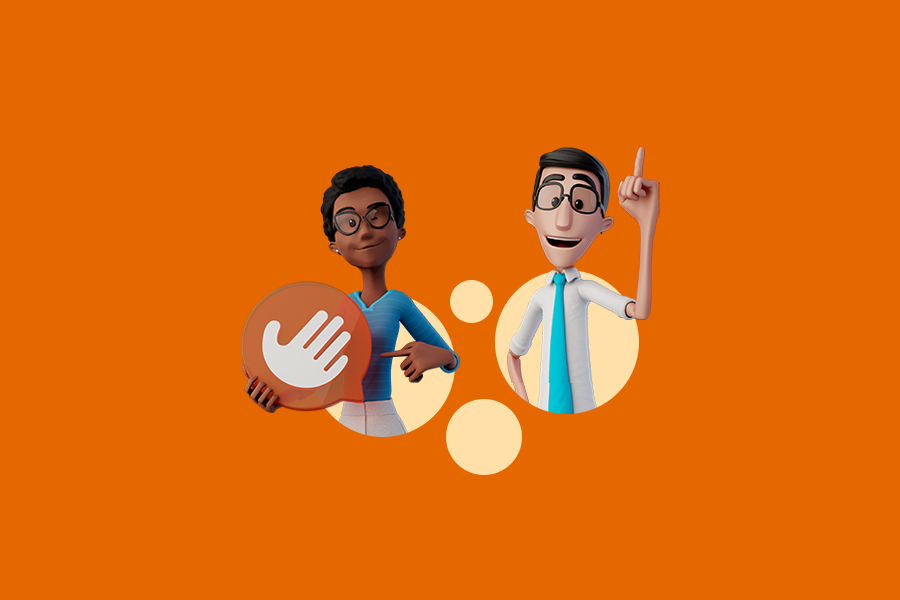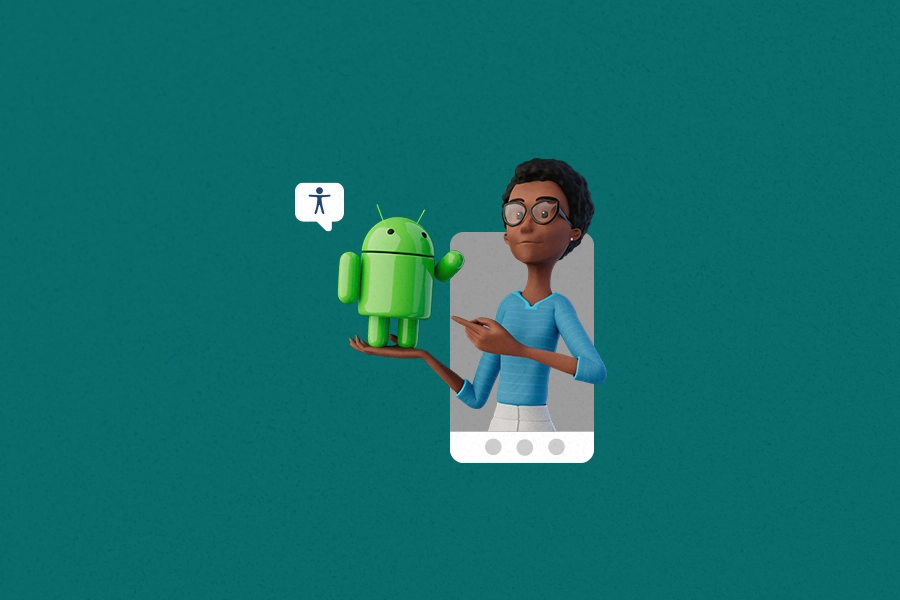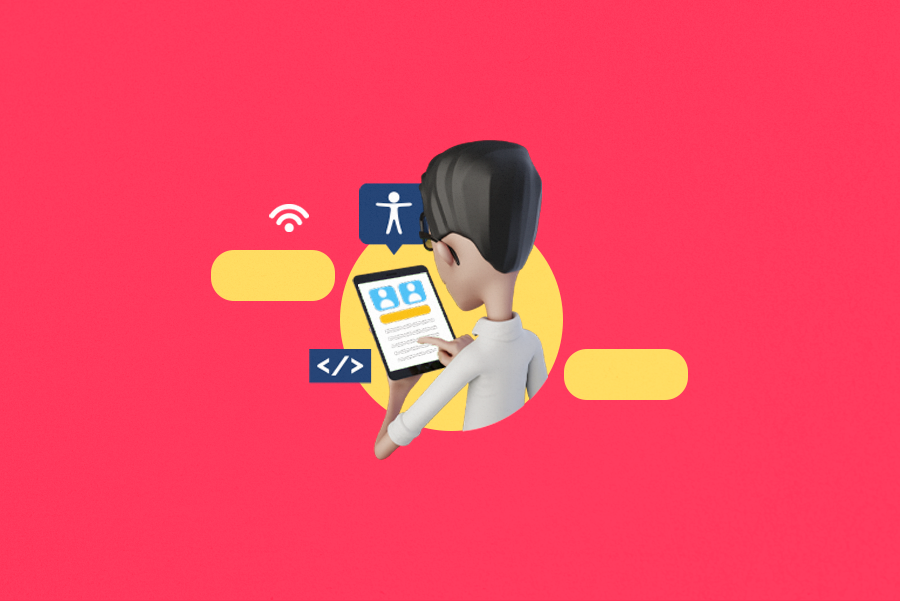
Hugo and Maya: how were the Hand Talk characters created?

Have you already met Hugo and Maya? They are the characters from Hand Talk responsible for promoting web accessibility! The two are our 3D virtual translators, tasked with automatic translation into Sign Languages, whether in the Hand Talk App or the Hand Talk Plugin.
Although they are already old acquaintances, many people still wonder how and why they came about. Do you want to discover why Hugo and Maya are the way they are? Interested in the reason behind their names and appearance? Then come with us!
What is Hand Talk?
To begin with, it is worth providing you a bit more context about Hand Talk itself. Our mission is to break down communication barriers through technology. We are a SocialTech focused on promoting digital accessibility and the inclusion of people with disabilities in the online world. We achieve this with the help of Artificial Intelligence and an incredible team of experts, including professionals with and without disabilities.
But thinking in a more practical way, how does Hand Talk contribute to digital accessibility? We do this through the Hand Talk App and the Hand Talk Plugin! Our technology automatically translates text and audio into Sign Languages; from English to ASL (American Sign Language) and from Portuguese to Libras (Brazilian Sign Language). Additionally, we offer an accessibility plugin with various assistive features, aiming to make the web accessible to an even larger audience, including those with visual and cognitive disabilities.
Who are the characters Hugo and Maya?
Now that you have learned a bit more about Hand Talk, it is time to have a more in depth understanding about the role that Hugo and Maya play here. They are our 3D virtual translators, responsible for the efficient translation of audio and text into ASL and Libras.
Hugo was our first translator, a character of a white man with short, straight, black hair who always wears square glasses. In his default configuration, he also wears a white button-down shirt, a blue tie, and jeans. Hugo was born alongside Hand Talk in 2012.
A few years later, in 2020, Maya came along. She is a character representing a black woman with short, curly, black hair. Just like her friend Hugo, she also wears glasses. In her default configuration, she is always dressed in a striped blue blouse and white pants.
What are 3D virtual translators?
You might already be familiar with the concept of virtual translators. They are tools designed to convert text or speech from one language to another. These translators use Natural Language Processing (NLP) technologies, an Artificial Intelligence subfield, to understand the meaning of words, phrases, or sentences in one language and produce an equivalent version in the target language.
Most of the time, virtual translators come along in text or audio format. However, if our goal is to translate written language into Sign Language, the result could not be in words, right?
This is where the 3D part comes into play. To efficiently translate in Sign Languages, which are spatial-visual languages, we need 3D characters capable of signing and expressing themselves comprehensively to the deaf community – our 3D virtual translators!
The origin of the characters Hugo and Maya
Want to dig even deeper into the story of Hugo and Maya? Let’s do it! Here, we will tell you how and why they came about, as well as share the answer to a frequently asked question: why were they given these names?
Hugo: the precursor of digital accessibility at Hand Talk
As mentioned earlier, Hugo was our first 3D virtual translator. The character was created to be a friendly and efficient interface for Sign Language translation, with its design carefully considered for accessibility.
Both he and Maya have thin and long arms, as well as large faces and hands, to facilitate the visualization of signs. Oh, and Hugo’s big smile was not just for show. With a large and expressive face, understanding Sign Language communication becomes much easier and more accurate. Did you know, for example, that the same sign can mean two different things based on changes in facial expression?
Finally, Hugo is a short and global name, easy to pronounce anywhere in the world, which is super important for helping to reduce communication barriers. His name also derives from the Germanic element “hug”, meaning “heart.” We think it perfectly suits this friendly and charismatic character, do you not?
Maya: a character focused on representation
After many years relying on Hugo as our only 3D virtual translator, we thought it was time to add another character to the team. This was a great opportunity to increase the diversity and representation of our team, which is why Maya holds such significance for us.
Her name was chosen for being short, universal, and easy to memorize, just like Hugo’s. Moreover, Maya reflects beautiful symbolisms, such as transformation, cleanliness, and purity, in analogy to water and love, a reference to motherhood.
Can Hugo and Maya be customized?
We have talked a lot about the appearance of our characters Hugo and Maya, as well as explained the importance of their design for accessibility, but that does not mean they cannot be customized! But hold on, they can only be customized to a certain extent.
There are various options in the Hand Talk App store where you can check out how to customize Hugo and Maya the way you prefer, from traditional Carnival costumes to Christmas outfits. Oh, and they can also appear in special clothes in your accessibility plugin, literally wearing your company’s colors. Want to know more? Then get in touch with Hand Talk experts!


